ISRIB
Synonym(s):Integrated Stress Response inhibitor;trans-N,N′-(Cyclohexane-1,4-diyl)bis(2-(4-chlorophenoxy)acetamide;trans-N,N′-1,4-Cyclohexanediylbis[2-(4-chlorophenoxy)-acetamide
- CAS NO.:548470-11-7
- Empirical Formula: C22H24Cl2N2O4
- Molecular Weight: 451.34
- EINECS: 231-545-4
- Update Date: 2024-10-30 20:13:01
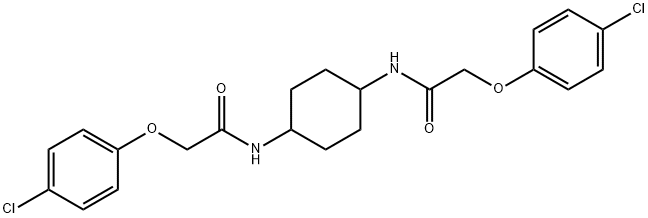
What is ISRIB?
Description
ISRIB (integrated stress response inhibitor) is an experimental drug that reverses the effects of eIF2α phosphorylation with an IC50 of 5 nM. It was discovered in the laboratory of Peter Walter at University of California, San Francisco (UCSF) through a semi-automated screening of a large library of small molecules by Carmela Sidrauski, who decided to pursue research on it. It has been shown to inhibit eIF2α phosphorylation-induced stress granule (SG) formation. Since eIF2α phosphorylation is known to be involved in memory formation, ISRIB was tested to see whether it would be active in vivo, and was found to readily cross the blood-brain barrier, with a half-life of eight hours.
The Uses of ISRIB
ISRIB (mix-Isomer), is a symmetric bis-glycolamide that inhibits integrated stress response (ISR). In wild-type mice studies has shown that it improved memory by efficiently reversing the effects of eIF2α phosphorylation, which has brought expectation that inhibition of PERK signaling may have the potential to ameliorate Alzheimer's disease. In a present study ISRIB demonstrated to attenuate amyloid b-induced neuronal cell death although the pharmacological mechanisms of this action have not yet been elucidated.
What are the applications of Application
ISRIB (integrated stress response inhibitor) has been used as an inhibitor of integrated stress response.
Biological Activity
ISRIB (integrated stress response inhibitor) as a drug, imparts resistance to the cells against the downstream effects of eukaryotic initiation factor 2 (eIF2)α phosphorylation such as activating transcription factor 4 (ATF4) and eukaryotic translation initiation factor 4E (eIF4E)-binding protein 1 (4E-BP1) induction.
ISRIB is a blood- brain barrier penetrant, potent and selective inhibitor of integrated stress response (ISR) that impairs adaptation to ER stress. ISRIB is a potent inhibitor of PERK signaling, which potently reverses the effects of eIF2a phosphorylation and restores the cells translation capacity. ISRIB enhances cognitive memory in rodents.
Safety
The safety of ISRIB in humans is currently unknown, though there may be toxicity in certain animal models.
Types of evidence:
Multiple preclinical studies
In an Alzheimer's animal model, a dose of ISRIB too high (5mg/kg) caused excessive mortality and the dose had to be lowered (Briggs et al, 2017). An effective, yet non-lethal dose and dosing schedule, has yet to be determined and may depend on the particular disease being treated. Whether long-term treatment with ISRIB is safe is also not yet determined.
in vitro
ISRIB is a potent inhibitor of PERK signaling.
As one of the four eIF2α kinases in mammalian cells, PERK responds to an accumulation of unfolded proteins in the endoplasmic reticulum.
In vitro: Compared with cis-ISRIB, trans-ISRIB proved 100-fold more potent (IC50 = 5 nM vs IC50 = 600 nM), suggesting that ISRIB interacted with its cellular target stereospecifically. In addition, ISRIB could block the production of endogenous ATF4, while had no obvious effect on XBP1 mRNA splicing and XBP1s production. Meanwhile, ISRIB did not affect activation of the ATF6-branch of the UPR, however, ISRIB could block the downstream of PERK and eIF2α phosphorylation.
In vivo: In mouse with a single intraperitoneal injection, ISRIB showed a plasma half-life of 8 hr and readily crossed the blood-brain barrier with quick equilibrium in the central nervous system. The detected brain ISRIB concentrations were found to be several fold higher than its IC50. Moreover, ISRIB-treated mice displayed significant enhancement in spatial and fear-associated learning. Therefore, memory consolidation was inherently limited by the ISR, and ISRIB could release suchbrake. These results showed that ISRIB might contribute to the understanding and treatment of cognitive disorders.
Clinical trial: Up to now, ISRIB is still in the preclinical development stage.
in vivo
in mouse with a single intraperitoneal injection, isrib showed a plasma half-life of 8 hr and readily crossed the blood-brain barrier with quick equilibrium in the central nervous system. the detected brain isrib concentrations were found to be several fold higher than its ic50. moreover, isrib-treated mice displayed significant enhancement in spatial and fear-associated learning. therefore, memory consolidation was inherently limited by the isr, and isrib could release suchbrake. these results showed that isrib might contribute to the understanding and treatment of cognitive disorders [1].
Drug interactions
Drug interactions have not been studies; though ISRIB could potentially interact with drugs that have been reported to act on the integrated stress response pathway (e.g., trazodone, Halliday et al, 2017).
References
[1] sidrauski c, et al. pharmacological brake-release of mrna translation enhances cognitive memory. elife. 2013 may 28;2:e00498.
Properties of ISRIB
| Melting point: | 270-273°C |
| Boiling point: | 719.0±60.0 °C(Predicted) |
| Density | 1.33±0.1 g/cm3(Predicted) |
| storage temp. | 2-8°C |
| solubility | DMSO: soluble1mg/mL, clear (warmed) |
| pka | 13.63±0.40(Predicted) |
| form | powder |
| color | white to beige |
Safety information for ISRIB
Computed Descriptors for ISRIB
| InChIKey | HJGMCDHQPXTGAV-UHFFFAOYSA-N |
| SMILES | C1(NC(=O)COC2=CC=C(Cl)C=C2)CCC(NC(=O)COC2=CC=C(Cl)C=C2)CC1 |
New Products
Bromine 99.5% AR (4 x 500ml) Fehling's Solution No. B Amino Acid Kit of 23 items set Ammonium Molybdate Reagent Solution Beam's Reagent Solution Ehrlich's Reagent For detection of urobillinogen 4-Hydroxy Carbazole 4-((2-isopropoxyethoxy)methyl)phenol 2 – Methoxy – 5- Sulfamoyl Benzoic acid Amino Salicylic Acid. U.S.P. 1,2,3,4-Tetrahydrocarbazol-4-one Acetone Isobutryl oxime ester Curcuma aromatica Oil Curry leaf Extract Terminalia bellirica Extract Aloe vera extract 200x Withania somnifera (Ashwagandha Extract) Citrus bioflavonoids Extract (S)-4-(4-(5-(Aminomethyl)-2-Oxooxazolidin-3-Yl)Phenyl)Mo Ethyl N-[[2-[[[4-(Aminoiminomethyl)Phenyl]Amino]Methyl] 5-Nitrosalicylaldehyde 5-(Difluoromethoxy)-2-Mercapto-1H-Benzimidazole- IP/BP/ Cypermethric Acid Chloride Methyl Di Chloride (Mdc)Related products of tetrahydrofuran
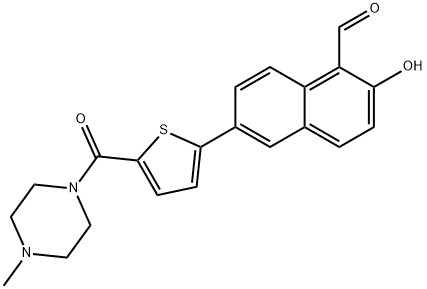

![7Methyl-5-(1-{[3-(trifluoroMethyl)phenyl]acetyl}-2,3-dihydro1Hindol-5-yl)7Hpyrrolo[2,3d]pyriMidin-4-aMine](https://img.chemicalbook.in/CAS/GIF/1337531-36-8.gif)
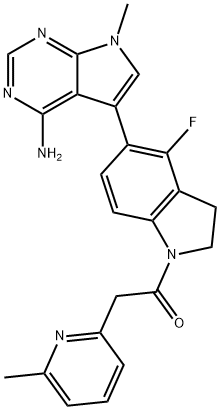
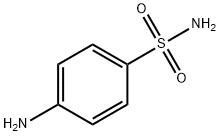
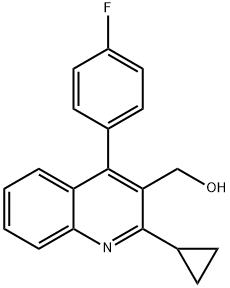
You may like
-
 N,N'-(Cyclohexane-1,4-diyl)bis(2-(4-chlorophenoxy)acetamide) 95% CAS 548470-11-7View Details
N,N'-(Cyclohexane-1,4-diyl)bis(2-(4-chlorophenoxy)acetamide) 95% CAS 548470-11-7View Details
548470-11-7 -
 7726-95-6 Bromine 99.5% AR (4 x 500ml) 99%View Details
7726-95-6 Bromine 99.5% AR (4 x 500ml) 99%View Details
7726-95-6 -
 Formamide 99%View Details
Formamide 99%View Details
75-12-7 -
 2, 4-Pyrimidinediamine 3-Oxide 99%View Details
2, 4-Pyrimidinediamine 3-Oxide 99%View Details
74638-76-9 -
 111974-72-2 99%View Details
111974-72-2 99%View Details
111974-72-2 -
 85-81-4 6-Methoxy-8-Nitroquinoline 99%View Details
85-81-4 6-Methoxy-8-Nitroquinoline 99%View Details
85-81-4 -
![3-Bromo-4,5-Dihydro-1H-Benzo[B]Azepin-2(3H)-One 99%](https://img.chemicalbook.in//Content/image/CP5.jpg) 3-Bromo-4,5-Dihydro-1H-Benzo[B]Azepin-2(3H)-One 99%View Details
3-Bromo-4,5-Dihydro-1H-Benzo[B]Azepin-2(3H)-One 99%View Details
86499-96-9 -
 (−)-Dip-Chloride 85116-37-6 99%View Details
(−)-Dip-Chloride 85116-37-6 99%View Details
85116-37-6